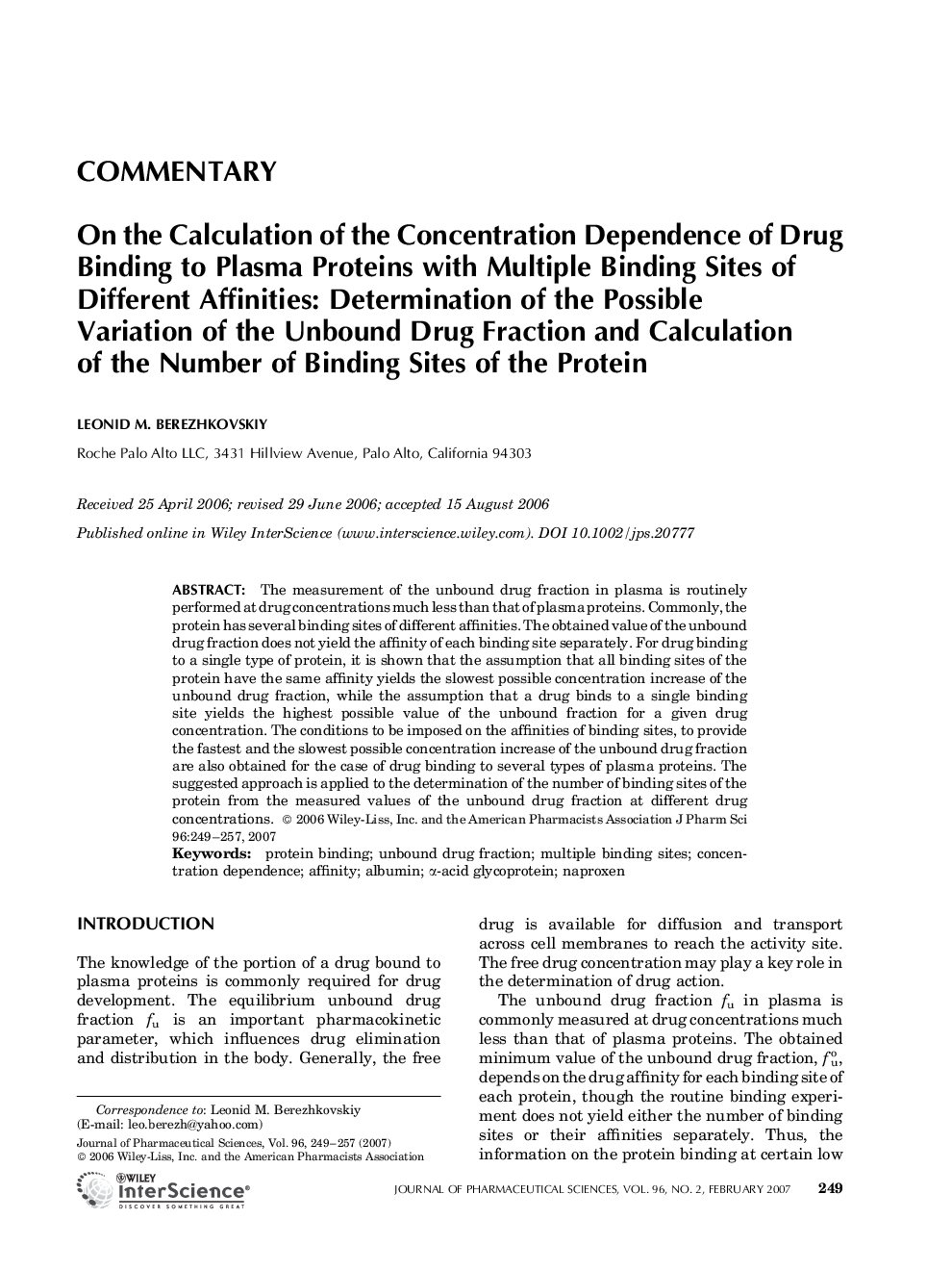| Article ID | Journal | Published Year | Pages | File Type |
|---|---|---|---|---|
| 2487030 | Journal of Pharmaceutical Sciences | 2007 | 9 Pages |
Abstract
The measurement of the unbound drug fraction in plasma is routinely performed at drug concentrations much less than that of plasma proteins. Commonly, the protein has several binding sites of different affinities. The obtained value of the unbound drug fraction does not yield the affinity of each binding site separately. For drug binding to a single type of protein, it is shown that the assumption that all binding sites of the protein have the same affinity yields the slowest possible concentration increase of the unbound drug fraction, while the assumption that a drug binds to a single binding site yields the highest possible value of the unbound fraction for a given drug concentration. The conditions to be imposed on the affinities of binding sites, to provide the fastest and the slowest possible concentration increase of the unbound drug fraction are also obtained for the case of drug binding to several types of plasma proteins. The suggested approach is applied to the determination of the number of binding sites of the protein from the measured values of the unbound drug fraction at different drug concentrations.
Keywords
Related Topics
Health Sciences
Pharmacology, Toxicology and Pharmaceutical Science
Drug Discovery
Authors
Leonid M. Berezhkovskiy,
